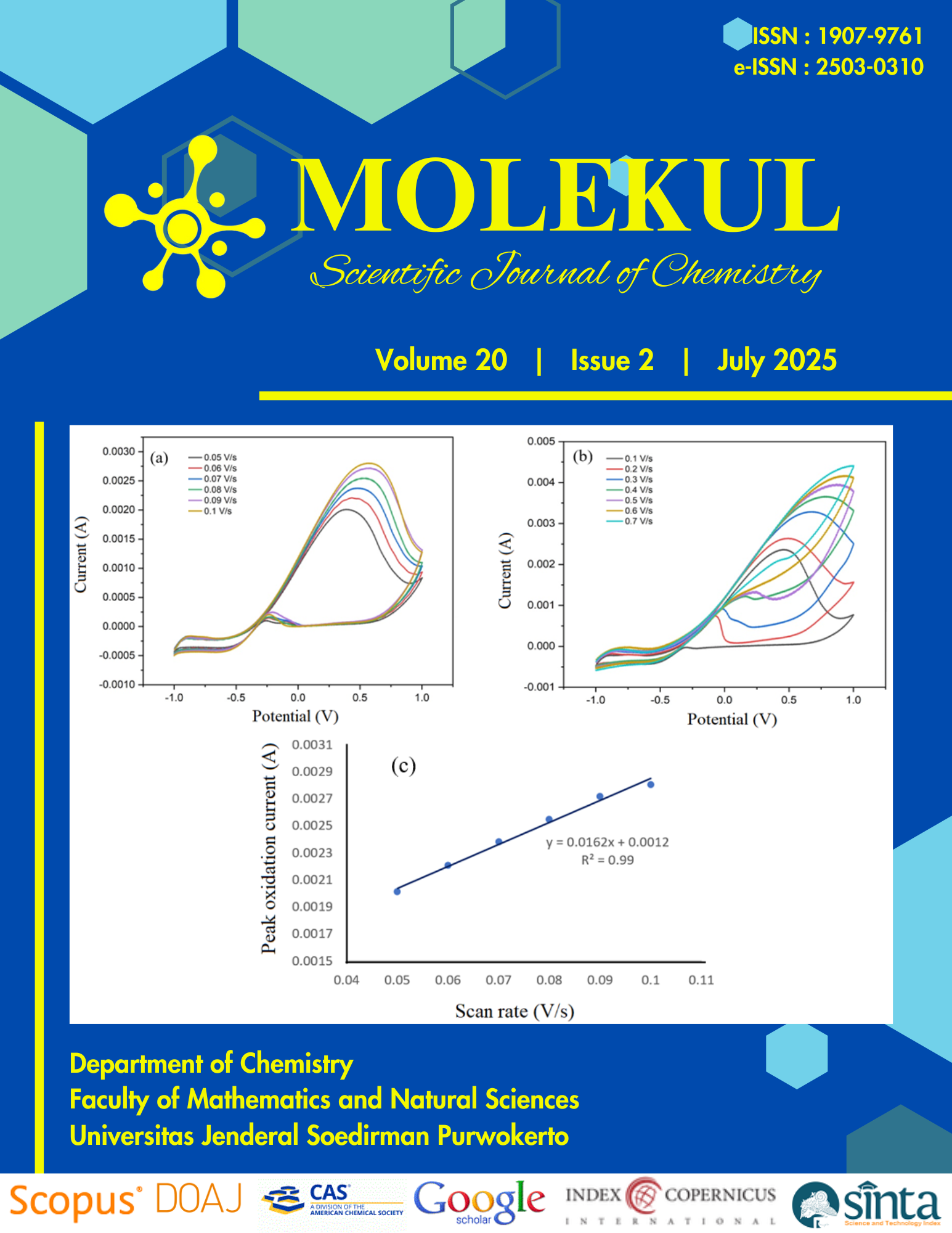Optimization and Characterization of Urease Immobilization from Red Lentil Seeds (Lens culinaris) Using Chitosan
Abstract
ABSTRACT. Urease is an enzyme that plays a vital role in catalyzing the hydrolysis of urea into ammonia (NH3) and carbon dioxide (CO2). This study focuses on the isolation of urease from red lentil seeds, followed by its immobilization. The objective of this research is to optimize and characterize urease that has been immobilized using chitosan and activated with glutaraldehyde. Red lentil seeds were processed with a mortar and pestle at low temperatures (4 °C) to obtain a crude enzyme extract, which was then concentrated using 50% acetone (P50) prior to immobilization. The optimization process for P50 urease immobilization involved assessing various factors, including chitosan concentration, glutaraldehyde concentration, temperature, and the immersion duration in glutaraldehyde. The findings revealed that the optimal conditions for immobilizing P50 urease were achieved at a chitosan concentration of 0.75%, with a 2% glutaraldehyde soak at 25 °C for 2 hours, resulting in an enzyme activity of 7.042 U/g. The immobilized P50 urease demonstrated the ability to be reused up to 7 times while maintaining 51% of its initial activity. Scanning Electron Microscopy (SEM) analysis indicated morphological changes in the beads after the addition of glutaraldehyde and the enzyme, shifting from a rounded to an irregular shape. Additionally, Fourier Transform Infrared Spectroscopy (FTIR) analysis identified C-N and C=N peaks, confirming the successful incorporation of glutaraldehyde.
Keywords: immobilization, red lentil seeds, glutaraldehyde, chitosan, urease
Authors agree with the statements below:
- Authors automatically transfer the copyright to the MOLEKUL journal and grant the journal right of first publication with the work simultaneously licensed under a Creative Commons Attribution 4.0 International License (CC BY 4.0).
- Authors are able to enter into separate permission for the non-exclusive distribution of the journal's published version of the work (e.g., post it to an institutional repository or publish it in a book), with an acknowledgment of its initial publication in this journal.













